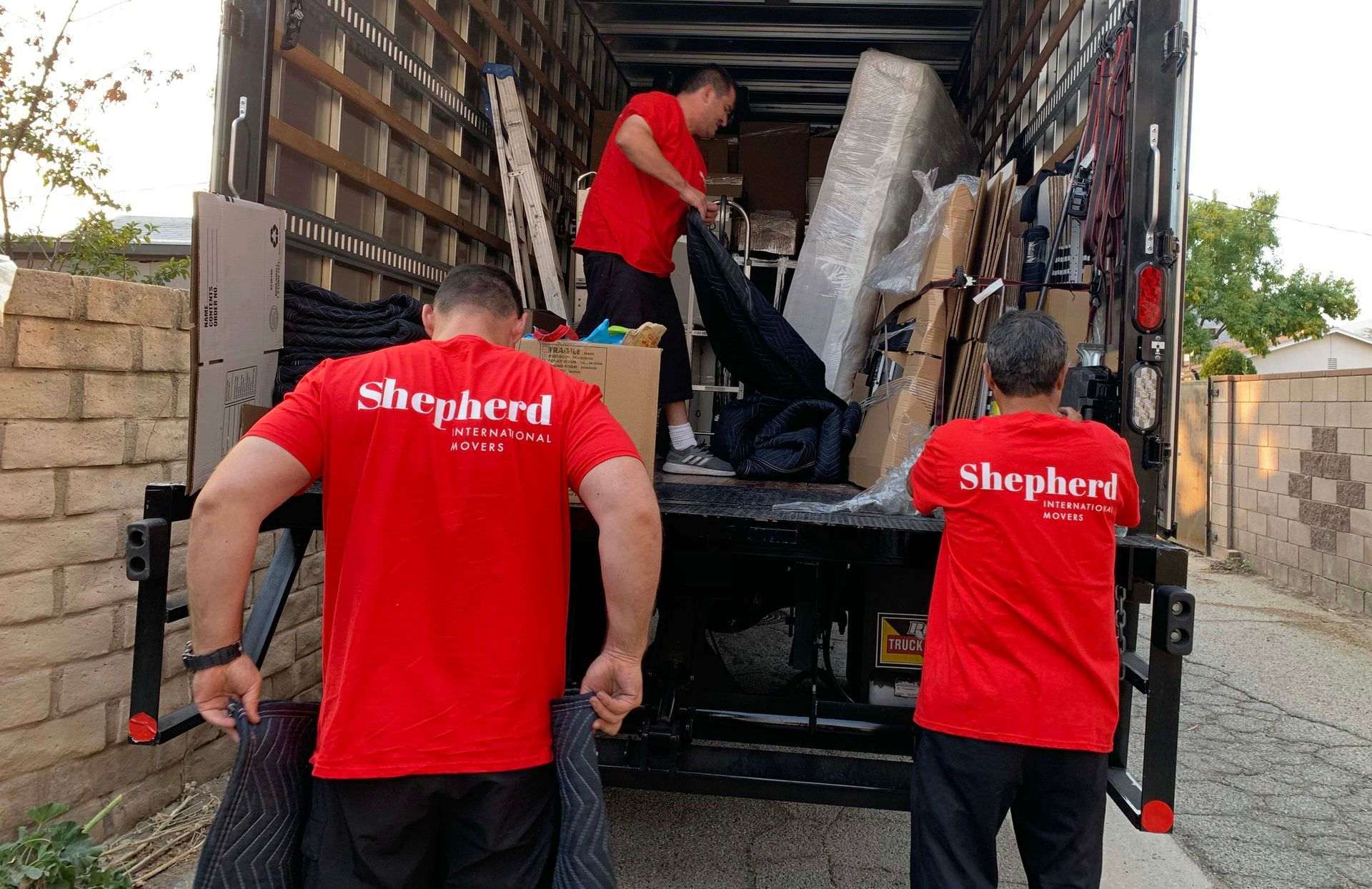

Relocating abroad can be an exciting but daunting endeavor, filled with numerous logistical challenges. One of the most crucial aspects is designing a foolproof packing schedule for moving. This intricate task requires careful planning, organization, and attention to detail. In this guide, we will explore the essential steps and strategies to help you create a comprehensive schedule that will ease the transition to a new life abroad.
A well-structured packing schedule is crucial for time management and organization when relocating. It offers psychological benefits by instilling a sense of control. Adapting to unique circumstances is vital. Customizing the schedule involves setting milestones and using tools like calendars. Handling setbacks means adjusting schedules and managing stress. Final preparations entail reviewing tasks and confirming logistics with the relocation company. These efficient moving strategies ensure a smooth transition.
The Importance of a Packing Schedule in Relocation
A meticulously planned schedule is a linchpin in any relocation, whether local or international. It’s the roadmap that can spell the difference between a seamless move and a chaotic one. Structuring tasks brings manifold advantages, foremost among them being effective time management.
This allows you to allocate ample time for each phase, reducing the potential for last-minute scrambles and forgotten essentials. Moreover, it aids in keeping the entire process organized, enabling you to categorize items, label boxes accurately, and maintain a comprehensive inventory. Such meticulous planning is the best defense against the stress of relocating.
Benefits of Having a Structured Packing Plan
A structured packing plan for moving isn’t just about pragmatic advantages – it also offers invaluable psychological benefits. As you methodically tick off each task, you’ll experience a sense of control and organization that can quell the relocation anxiety associated with the process.
The assurance that comes from knowing exactly what needs to be done and having a well-defined plan in place can be remarkably calming. By feeling in control and organized, you’re more likely to approach the relocation with confidence, turning what might otherwise be a stressful ordeal into a manageable, even positive, experience.
Knowing Timeframe and Moving Constraints
Assessing relocation timeline is pivotal in crafting an effective relocation schedule. It’s essential to adapt a moving packing plan to align with the specific constraints and circumstances. This could mean compressing the packing timeline for moving if work commitments or family obligations limit available time. On the flip side, if you have the luxury of an extended timeframe, you can spread out tasks more evenly, reducing pressure and allowing for a more thorough organization.
Furthermore, unique circumstances like moving internationally necessitate additional considerations. These often entail navigating complex logistics, such as customs regulations and shipping logistics. Adapting a schedule to accommodate these specific challenges is crucial to ensuring a smooth transition to a new home. Tailoring the approach to the timeline and constraints is the key to a successful and less stressful relocation experience.

Creating a Customized Packing Schedule
A customized schedule is the backbone of a successful and efficient relocation. It’s a personalized roadmap that ensures that the move proceeds smoothly. To begin, focus on initial relocation planning and setting milestones.
This entails listing essential tasks, such as sorting and decluttering before moving and then establishing key deadlines. To have an organized relocation, consider using digital calendars, mobile apps, or physical planners, depending on your preference. These tools become invaluable in helping you visualize the progress and manage time effectively.
Allocating Time for Different Phases of Packing
Effective packing hinges on breaking the process into manageable phases. Start with decluttering to reduce the items you’ll need to pack. Then, allocate dedicated time to pack room-by-room or by categories. This approach prevents overwhelming feelings and ensures a methodical process. By setting aside specific timeframes for each phase, you maintain a sense of control and organization throughout the move.

Tips for Efficient Packing
To master the art of efficient packing, it’s essential to prioritize items thoughtfully. Start by identifying non-essential belongings, such as decorative items or off-season clothing, and pack them first.
These items can be safely packed away without disrupting your daily life. When deciding what to pack initially, consider the seasonality and frequency of use of specific possessions.
Items that are rarely used or out of season can be boxed up early, reducing the workload as moving day draws nearer.
Prioritizing Items for Packing
Prioritizing packaging tasks involves making strategic decisions about what to pack first. The key is to begin with non-essential items that won’t disrupt your daily routine when packed away, such as belongings that you rarely use. By tackling these items early in the process, you can gradually transition into full-blown packing mode without sacrificing convenience. This method ensures that the essential items remain easily accessible until the last moments before the move.
Streamlining the Packing Process
Streamlining the packaging process is an art that can save you time, energy, and even some headaches. There are several effective techniques to consider. Color-coding the boxes, for instance, allows you to identify their contents at a glance, making unpacking a breeze.
Implementing a numbering system for relocation boxes and keeping a corresponding inventory list simplifies tracking items and their designated rooms, further easing the unpacking process. Additionally, invest in quality packaging materials such as sturdy boxes, bubble wrap, and high-quality packaging tape.
These tools not only provide added protection for belongings but also expedite the packing process. By incorporating these practical relocation tips and tools into your routine, you can make the experience efficient and less stressful, ensuring a successful move.

Handling Challenges and Setbacks
In the midst of a move, challenges and setbacks can occasionally disrupt even the most well-planned schedules. When you find yourself falling behind, it’s crucial to know how to adapt and regain control of the situation. One effective strategy is to reassess priorities.
Focus on essential items first, ensuring you have immediate access to what you need in a new home. This way, even if you’re behind schedule, you’ll have the essentials on hand. Additionally, consider enlisting help from friends or hiring professional movers to expedite the process and catch up on lost time.
Adjusting the Schedule When Behind
When you fall behind the schedule, it’s natural to feel overwhelmed. Managing stress during such times is vital. Take short breaks to clear your mind, practice deep breathing, and maintain a positive mindset. Breaking down the tasks into smaller, more manageable portions can help you regain control and prevent stress from spiraling out of control. Remember that adaptability and resilience are your allies in the face of unexpected setbacks.
Dealing With Unexpected Challenges
When moving abroad, unexpected challenges often arise, from running out of supplies to realizing you need more helping hands. When facing supply shortages, consider reaching out to local stores or online sites like Craigslist for additional packaging materials or creatively repurpose household items to serve as temporary solutions.
If you require more assistance, don’t hesitate to ask friends, family, or even professional movers like Shepherd International Movers for support. Being flexible and resourceful when confronting unforeseen challenges ensures that you can adapt to any curveball thrown your way during the process, ultimately helping you stay on track and reduce stress.

Final Preparations Before Moving Day and Last-Minute Moving Tips
As the big day approaches, there are crucial final moving day preparations that can make the overseas transition smoother and less stressful. In the last week leading up to the move, it’s essential to execute a checklist of last-minute details to ensure nothing is overlooked. This moving checklist should include a review of all remaining packaging tasks, ensuring that all necessary supplies are on hand, and verifying that any valuable or fragile items are adequately protected.
Additionally, this is the time to dismantle any furniture pieces that need to be disassembled and to disconnect appliances properly. By wrapping up these last-minute details, you’ll minimize the risk of any hiccups and relocation mistakes along the way.
Wrapping Up the Last-Minute Details
The final week before the relocation day is the time to focus on wrapping up the last-minute details to ensure a smooth transition. Begin by reviewing the checklist to ensure that all essential tasks are accounted for. Pay close attention to last-minute tasks, ensuring that items like toiletries, clothing, and important documents are packed last and kept easily accessible.
This way, you won’t find yourself searching through boxes for everyday necessities when you arrive. Additionally, double-check the protection of fragile and valuable items to prevent things from breaking during transit. By addressing these final preparations meticulously, you’ll be well-prepared for a stress-free moving day.
Confirming Logistics With the International Moving Company
Another critical aspect of final preparations is confirming logistics with the chosen moving company. This involves a final round of communication to ensure that everything is in order for the scheduled move. First and foremost, verify the relocation date and time to ensure it aligns with your plans. Review the inventory list with the company to make sure all items are accounted for.
Discuss any special considerations or requirements, such as items that require extra care or specific handling instructions. By confirming these logistics, you’ll have peace of mind knowing that the relocation company is well-informed and prepared to provide a seamless transition. Clear communication in the final stages of the process is key to successful and stress-free moving overseas.

Navigating the Moving Maze – A Roadmap to Smooth Transition and Peace of Mind
Mastering the art of relocation requires careful planning and organization, with a well-structured schedule serving as a linchpin for success. It ensures efficient time management, reduces stress, and offers a sense of control. However, the most important task is hiring a reputable relocation company.
With the help of professional movers, you can rest assured every part of the move will be taken care of – from packing services to transporting all belongings safely either by sea or by air freight. So, make sure to contact Shepherd International Movers and leave everything up to professionals.
How Far in Advance Should I Start to Pack for a Move?
Begin 4-8 weeks before the move. This timeline provides ample time to organize, sort, and pack belongings systematically, reducing last-minute stress and ensuring a smoother transition.
What Are the First Items I Should Pack When Preparing for a Move?
Start with non-essential items like off-season clothing, decorative items, and belongings rarely used in daily life. This eases you into the packaging process and leaves essentials accessible.
How Can I Keep Track of What I’ve Packed and What Still Needs to Be Done?
Utilize a checklist, labels on boxes, or mobile apps to monitor the progress. These tools help you stay organized and ensure you don’t overlook any items or tasks.
How Do I Handle Fragile or Valuable Items?
Secure fragile or valuable items with appropriate packaging materials like bubble wrap and use sturdy boxes. Label them as fragile for careful handling to minimize the risk of damage during transit.
What Are the Most Common Mistakes to Avoid When Packing for a Move?
Avoid overloading boxes, as this can lead to breakage and injury. Always label boxes with their contents and steer clear of hazardous or perishable items to ensure a smooth and safe move.





